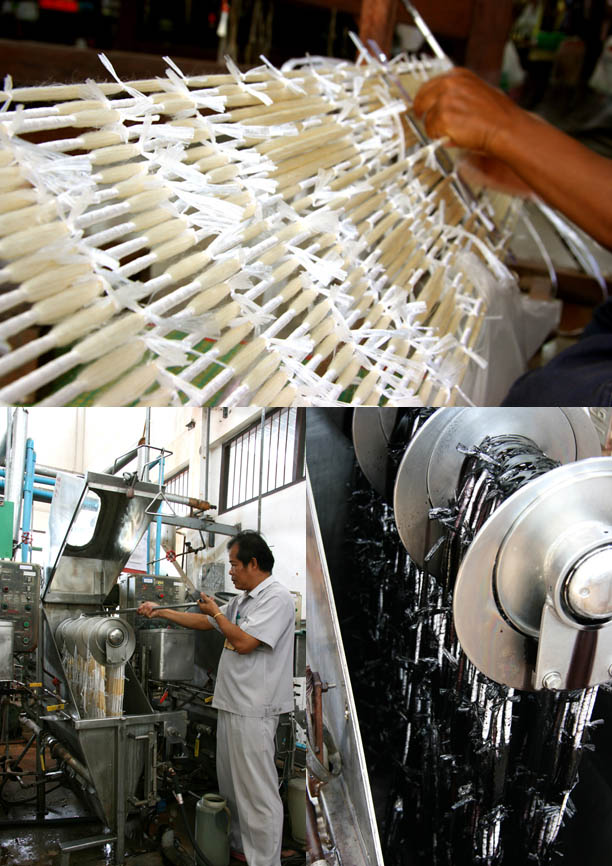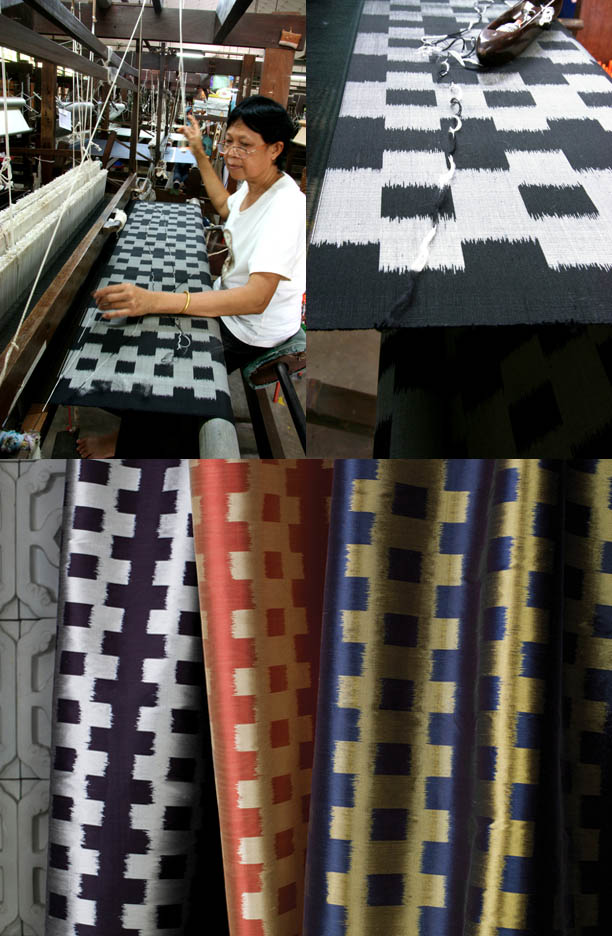I went to West Week at the PDC about a month ago. Not only did I get to meet Holly Hunt in person, but I also attended a great presentation by Tim Johnson of Jim Thompson (yes, you heard that right – I did not get the letters mixed up) on the process of making their eponymous Thai silks. There were tons of fascinating tidbits, like, did you know that the mulberry trees they use are not in fact trees but bushes? And did you know that fine silk is like fine wine, affected by the soil, climate, and other conditions that affect the mulberries and hence the silkworms? And that silk weaving on a hand loom is a family business that is passed down from generation to generation?
And what I found the most interesting was learning about Ikats. The explosion of Ikats in the textile world that has taken place over the past five years stems from a laborious process that is steeped in history. Ikat is a woven fabric. Well, I suppose almost all fabrics are woven, but what I mean is that the pattern is woven in versus printed on white goods. Woven patterns in and of themselves aren’t unusual. There are woven plaids, jacquards and all sorts of tapestries and crewels with woven in patterns. Ikat refers to its own special type of woven pattern process. The word for Ikat in Thai is “Mud-mee”. It is a made up of two separate words which literally translate as ‘to tie – threads’ and these two short words perfectly sum up how this particular textile is made. What is different about Ikat and what gives it its sort of flamed / rough edge quality is that the pattern is created by dying the weft yarns not one color but a series of colors, or rather by tying off sections of the yarn so that some resist the die. It’s like tie dying a piece of yarn instead of an entire piece of fabric. After dying the yarns the weavers line up the weft yarns on the loom by hand which creates the uneven “mis-aligned” edges or watercolor effect of the pattern. Nowadays, many Ikats are printed, because, as you can imagine, a true Ikat requires hours upon hours to weave and get right (not to mention a degree in higher mathematics). Check out the images of the process courtesy of Jim Thompson:
Creating the tied off sections and dying the yarns.
Untying the yarns and putting them on the loom.
Weaving and the final product Jim Thompson’s ‘Chloe’ silk.


